Cron Jobs
A cron job is a Linux command used to schedule tasks for future execution. It allows you to automate repetitive tasks, such as sending notifications or running scripts at specific intervals.
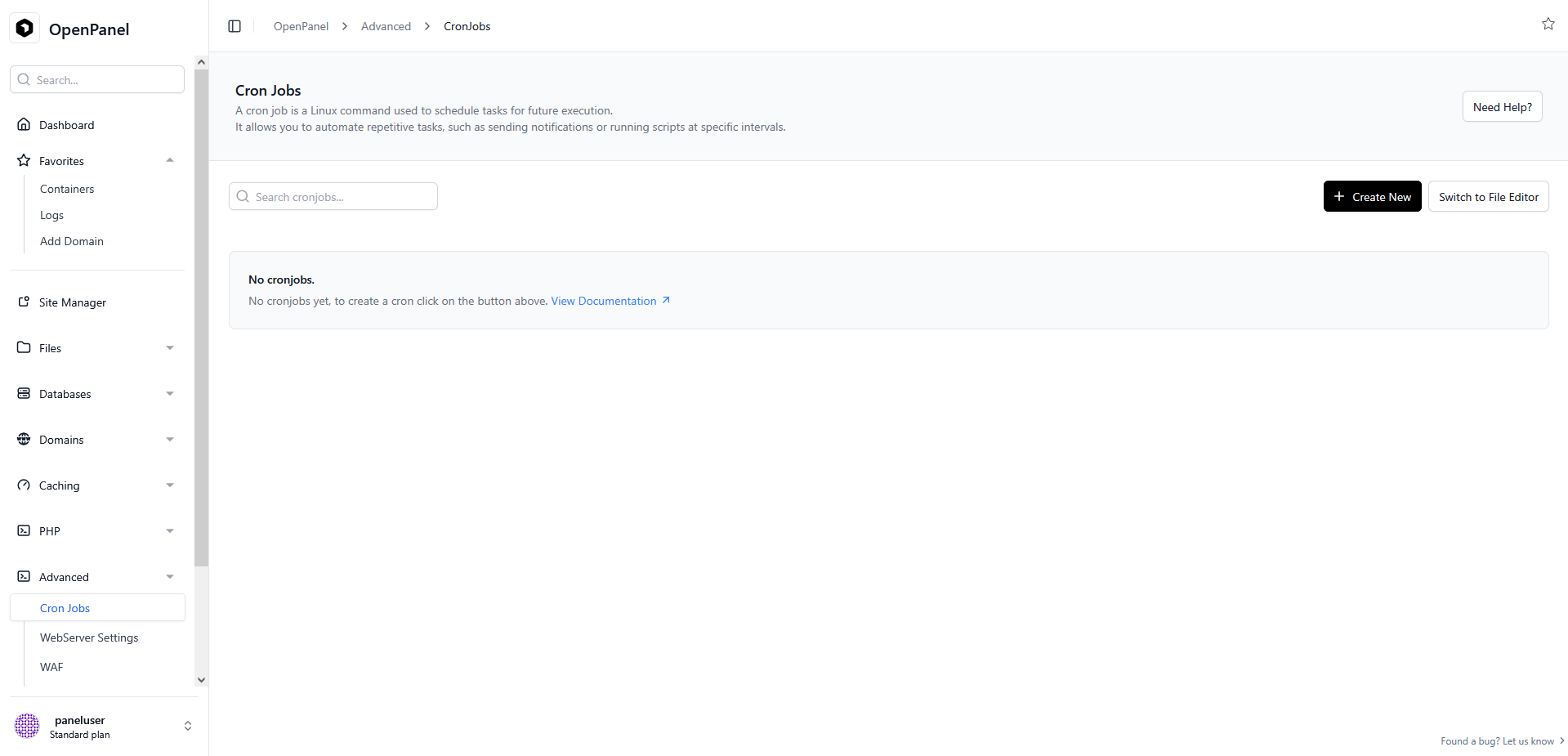
On the CronJobs page you can view currently scheduled tasks, create new, edit or delete them.
The TimeZone setting is handy for running scheduled cronjobs in your local timezone.
Add
To create a new cronjob click on the 'Create CronJob' button and in the new form set the script to be executed, choose a container to execute the script and the desired schedule.
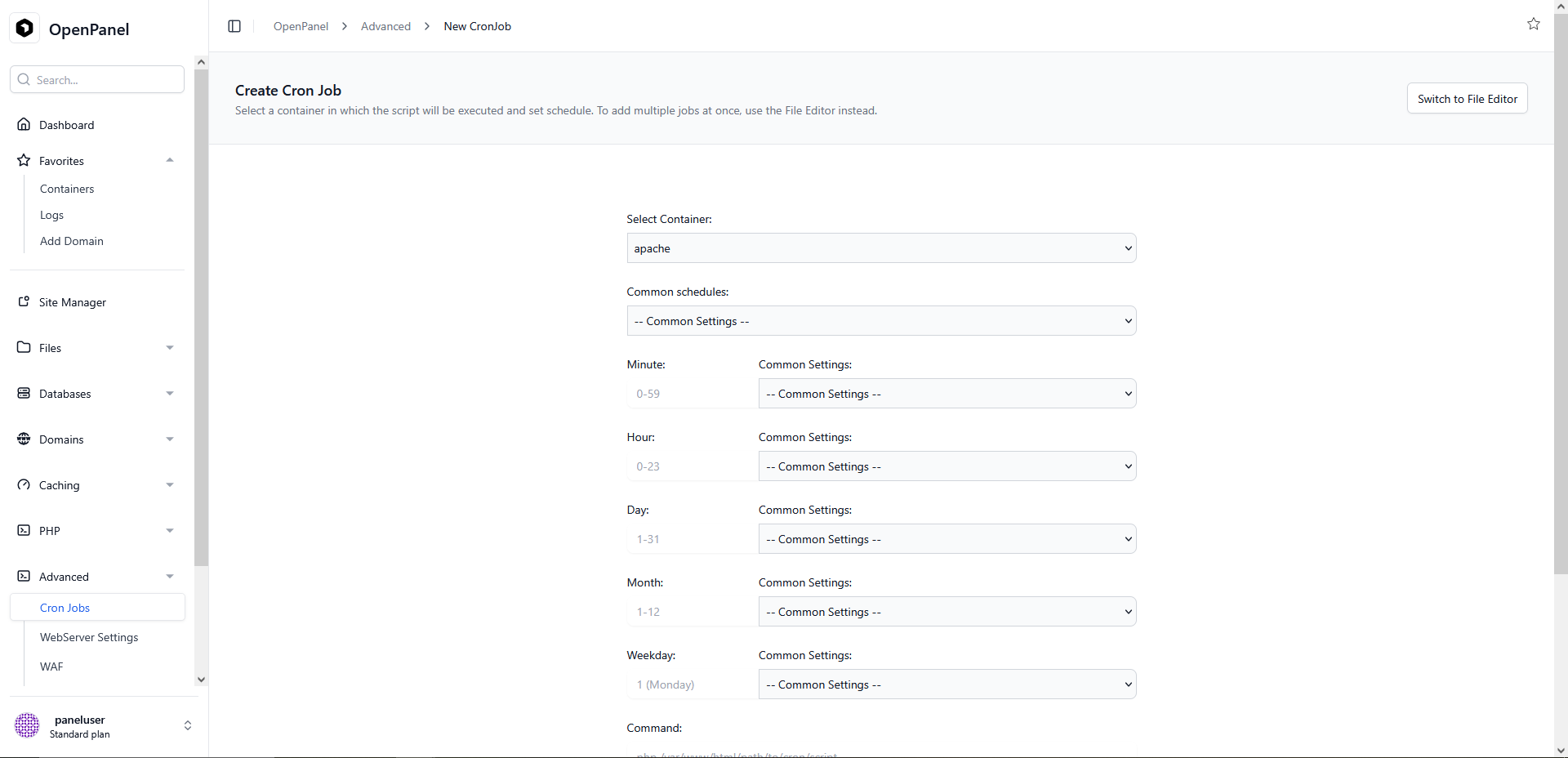
The first field allows you to choose the container which is going to be running the script.
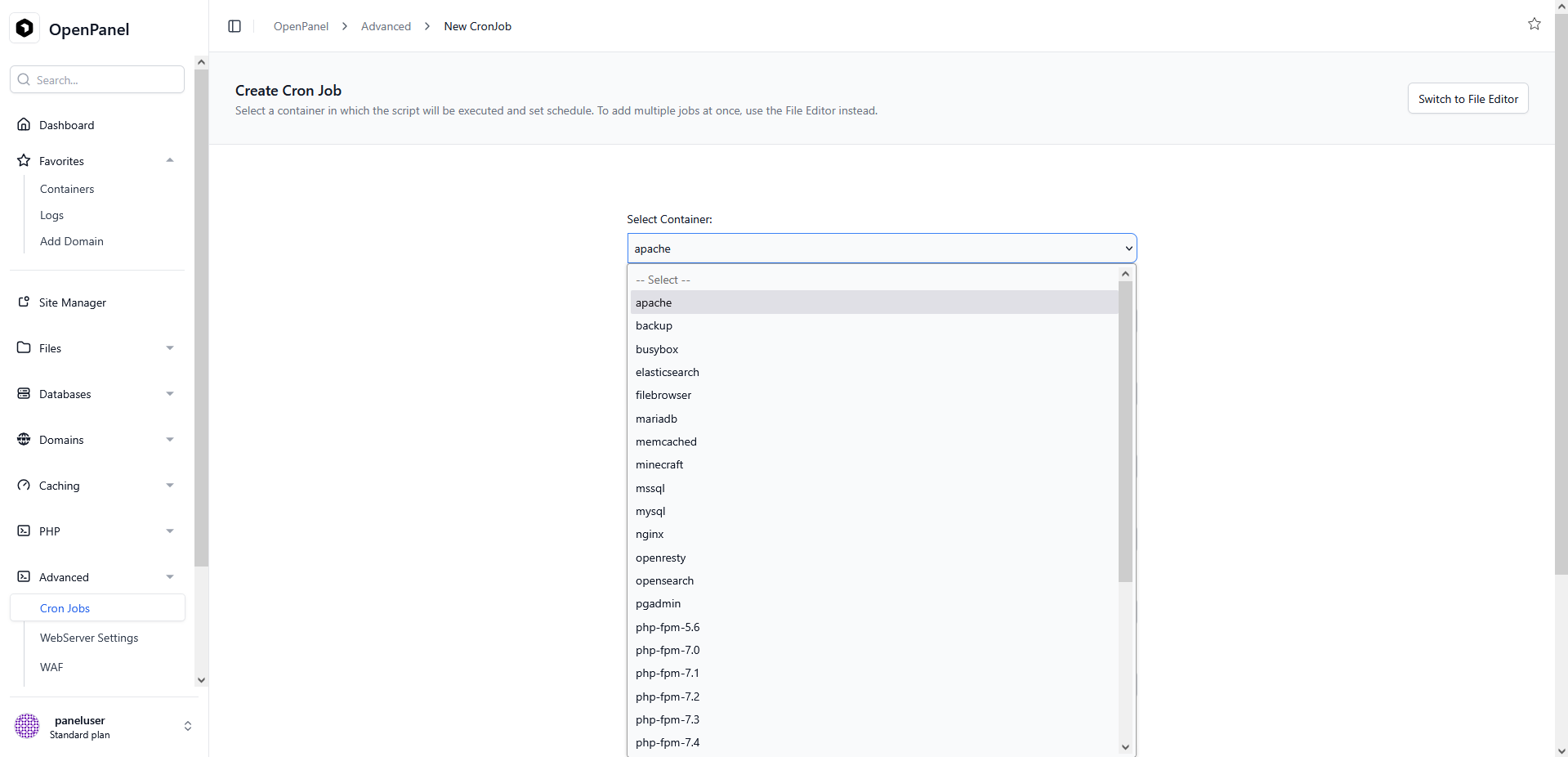
The second field allows you to set a predefined (common) schedule:
- Every 30s
- Every minute
- Every 5 minutes
- Every 30 minutes
- Hourly
- Daily
- Weekly
- Monthly
- Yearly
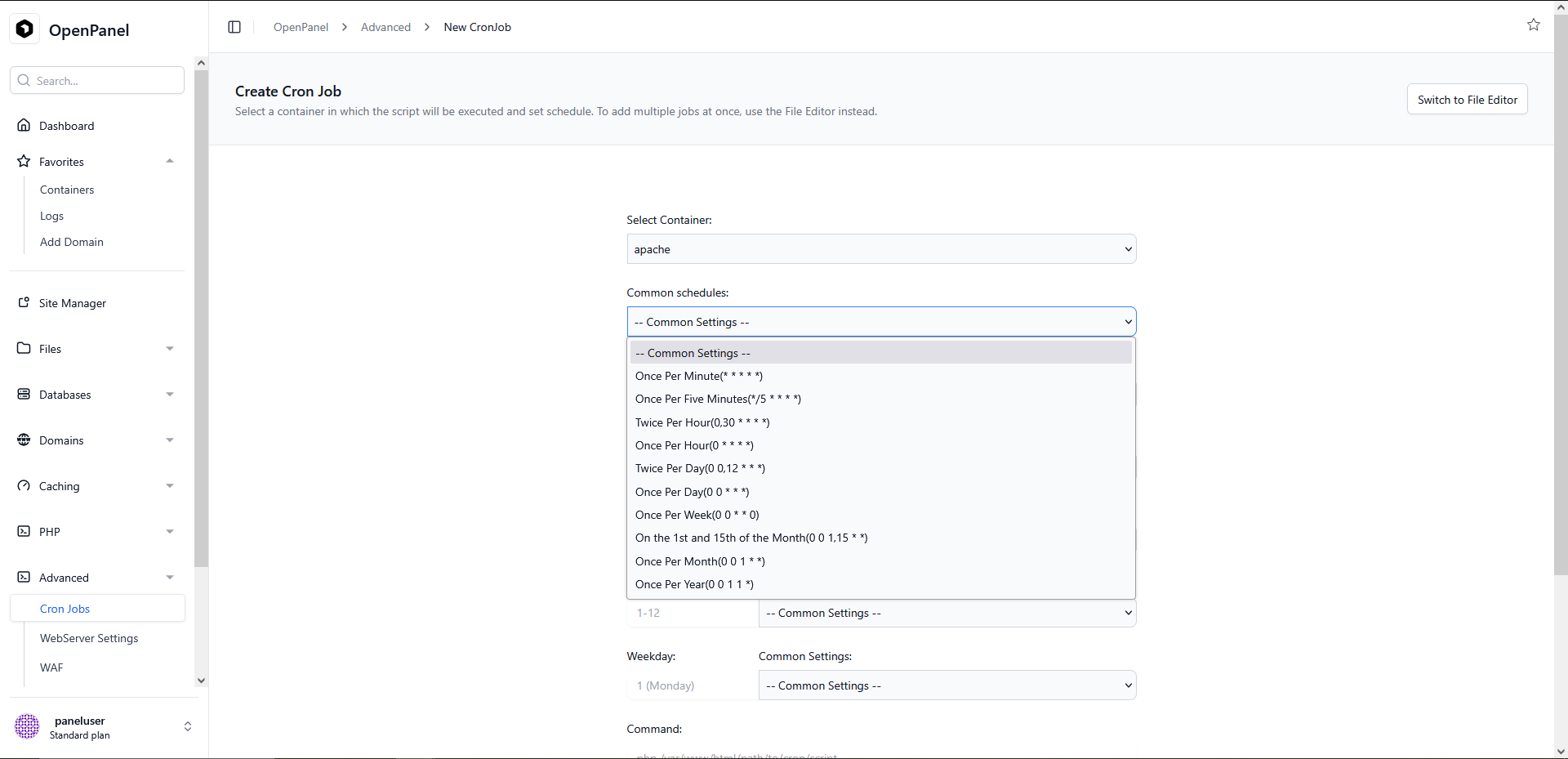
you can also set a standard cron expression representing set of times, using 6 space-separated fields:
| Field name | Mandatory? | Allowed values | Allowed special characters |
|---|---|---|---|
| Seconds | Yes | 0-59 | * / , - |
| Minutes | Yes | 0-59 | * / , - |
| Hours | Yes | 0-23 | * / , - |
| Day of month | Yes | 1-31 | * / , - ? |
| Month | Yes | 1-12 or JAN-DEC | * / , - |
| Day of week | Yes | 0-6 or SUN-SAT | * / , - ? |
There are 6 fields instead of the usual 5 found in standard Unix cron. This is because OpenPanel cron jobs also support scheduling by seconds.
For more information, check CRON_Expression_Format
Edit
To edit an existing cronjob, click on the 'Edit' button next to it. This action will allow you to edit that specific cron job.
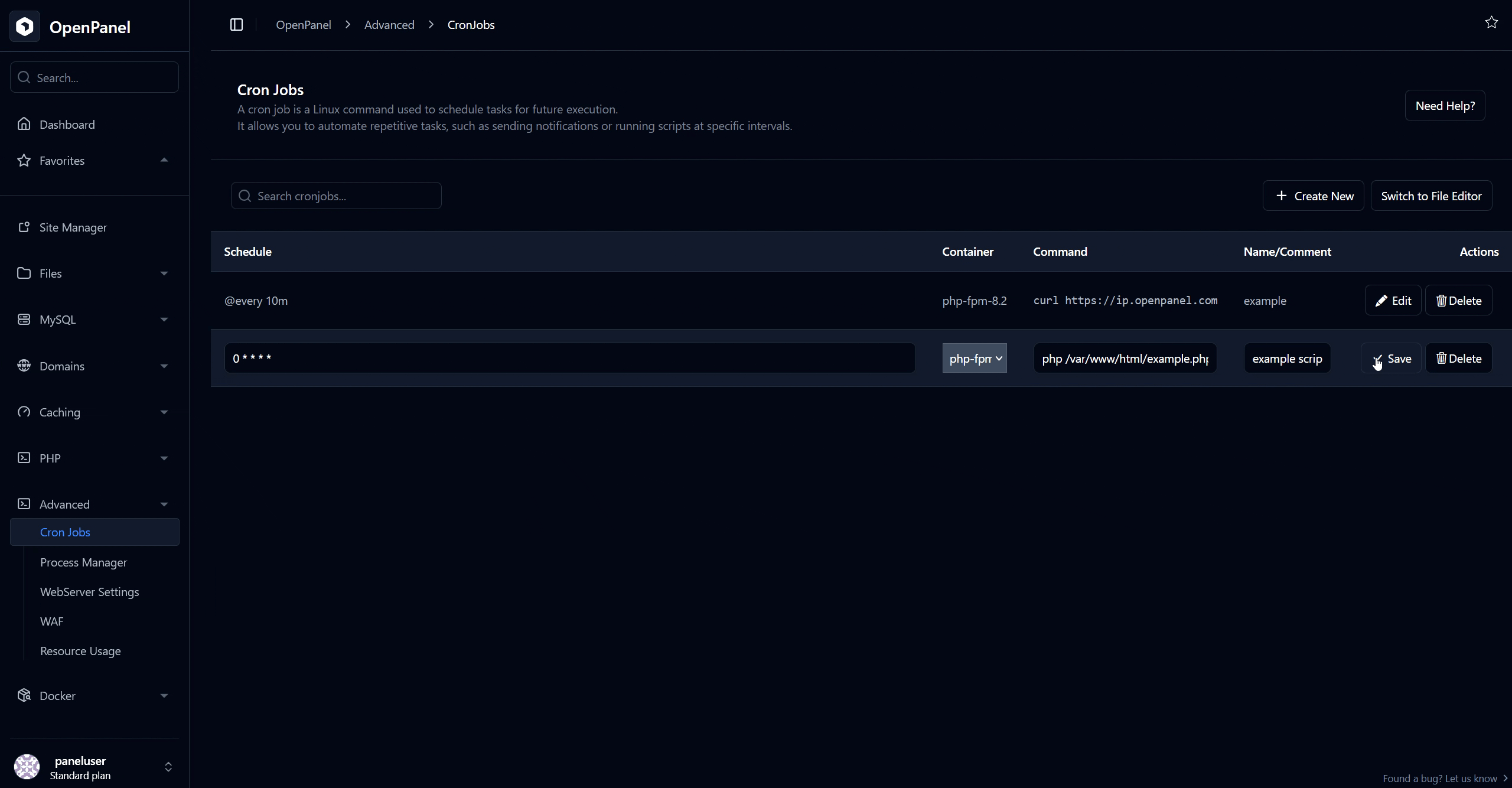
To modify the schedule for when the script is executed you can use a tool such as https://crontab.guru/.
When you're done click on the 'Save' button to update the crontab file with your changes.
Delete
To delete a cronjob, click on the 'Delete' button next to it. This action will open a modal asking you to confirm the deletion.
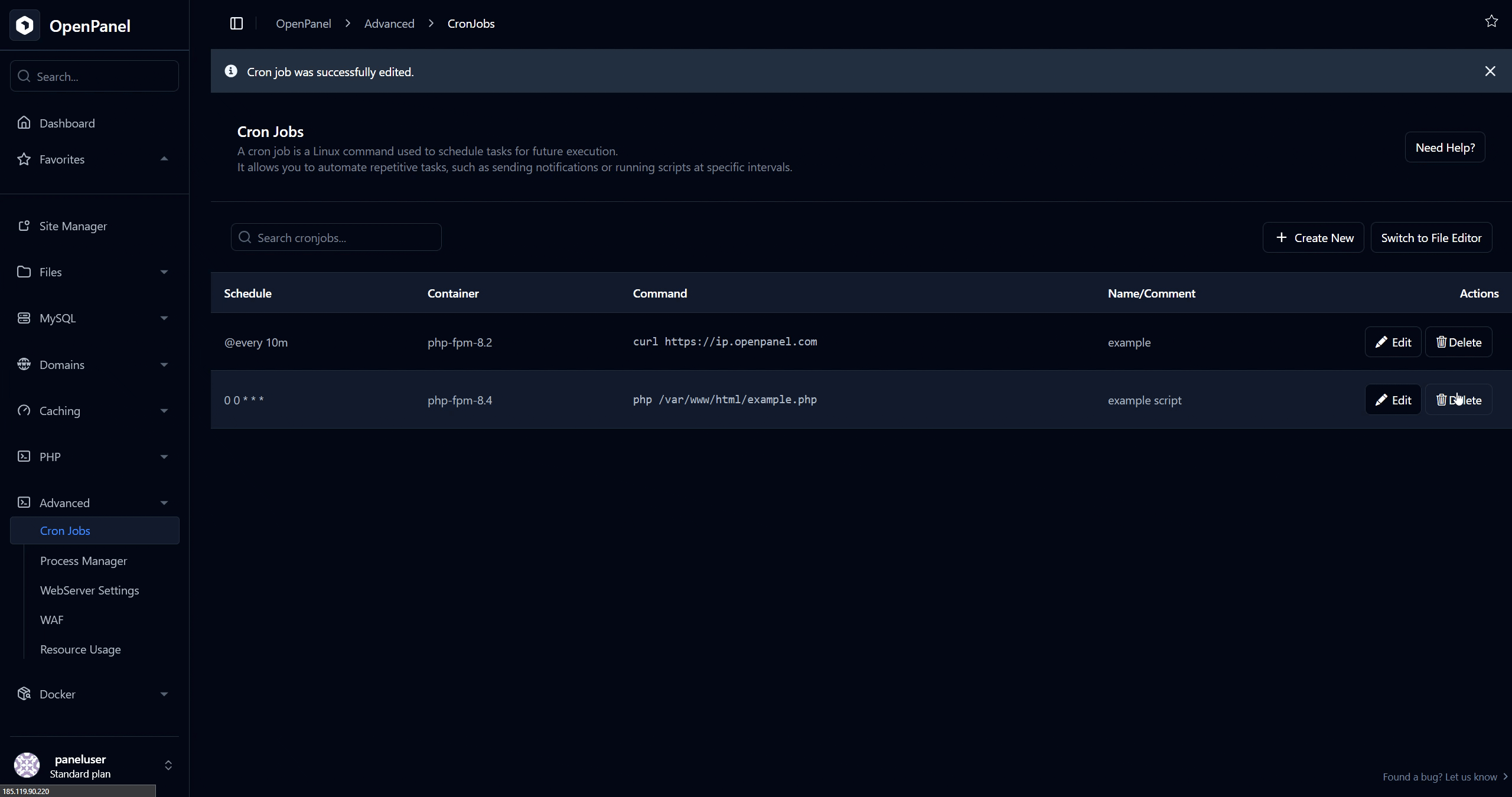
Logs
Each cron job execution is recorded in JSON format.
To view the logs, click the “View Logs” button. This will open a new tab displaying all cron job logs.
To filter logs by a specific job name (comment), append the following parameter to the URL:
?job= followed by the job name. Example: /cronjobs/log?job=whmcs-cron
File Editor
The File Editor option allows you to edit the file where crons are stored. File format is:
[job-exec "JOB_NAME"]
schedule =
container =
command =
Example:
[job-exec "example"]
schedule = @daily
container = nginx
command = curl https://ip.openpanel.com
Another Example:
[job-exec "whmcs-cron"]
schedule = @every 5m
container = php-fpm-8.4
command = php -q /var/www/html/whmcs-paths/crons/cron.php
You can also set no-overlap for a cronjob, to avoid running the job multiple times in parallel if the previous execution did not finish.
Import / Export
Cronjobs can be bulk-edited through a file, making it easy to edit multiple jobs at once or transfer them between servers. Simply click the “Switch to File Editor” button to open the editor.
